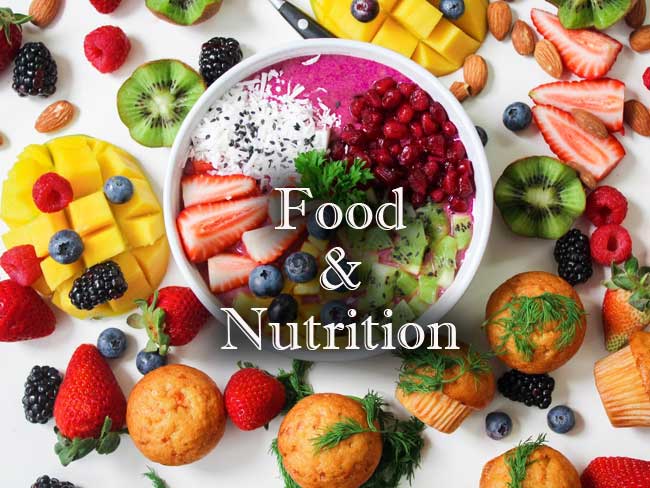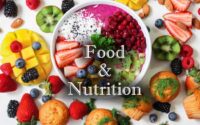Food and Nutrition GK
In this Article, we have provided the Food and Nutrition GK Question Papers along with Solutions. So, the interested candidates who applied for jobs in Food and Nutrition can download Food and Nutrition General Knowledge Question Papers for free of cost. Get all the Food and Nutrition General Knowledge Question Papers with just one click.

Click on the enclosed links below to download the Food and Nutrition GK Question Papers. Check the Last five years Food and Nutrition GK Question Papers to get a clear idea of the exam pattern. Along with Food and Nutrition General Knowledge Question Papers, it’s better to refer Food and Nutrition Syllabus & Exam Pattern before starting preparation. So, click on link to check and download Food and Nutrition GK Question Papers PDF.
GK Question Papers on Food and Nutrition
1. Baking powder contains:
a. NaCl
b. NaHCO3
c. Na -benzoate
d. NaI
2. FSSAI stands for:
a. Food Safety and Standards Authority of India
b. Food Security and Standards Authority of India
c. Food Safety and Security Authority of India
d. Food Safety and Standards Agency of India
3. Which one of the following is not a food preservative?
a. Acetic acid
b. Propionic acid
c. Butyric acid
d. Sorbic acid
4. Which out of the following is a non reducing sugar ?
a. Fructose
b. Glucose
c. Mannose
d. Sucrose
5. In cooking oils, the antioxidant added to prevent rancidity is:
a. Tocopherol
b. Ascorbic acid
c. BHT
d. TBHQ
6. Most common toxicogenic spoilage in stored groundnuts is:
a. Aspergillus flavus
b. Aspergillus niger
c. Aspergillus oryzae
d. Aspergillus albus
7. Sauerkraut is the fermented product of:
a. Cabbage
b. Turnip
c. Raddish
d. Beetroot
8. Argemone oil is used to adultrate:
a. Mustard oil
b. Milk
c. Tea
d. Milk
9. “C” enamel cans are used for:
a. High acidic food
b. Non- acidic foods
c. Medium-acidic foods
d. Fat rich foods
10. AGMARK was promulgated in:
a. 1937
b. 1954
c. 1935
d. 2009
11. Cold test of fat is a measure of:
a. Freezing point of oil
b. Viscosity of oil at temperature just above its freezing point
c. Resistance of oil to crystallization
d. Total saturated fat
12. For manufacturing of pasta, wheat variety used is:
a. Soft wheat
b. Hard wheat
c. Durum wheat
d. White wheat
13. Which of the following is produced with the combination of apoenzyme and coenzyme?
a. Holoenzyme
b. Enzyme substrate complex
c. Prosthetic group
d. Enzyme product complex
14. The enzyme which hydrolyses starch to maltose is:
a. Protease
b. Amylase
c. Lactase
d. Maltase
15. Enzymes having slightly different molecules structure but performing identical activity are:
a. Apoenzymes
b. Isoenzymes
c. Holoenzymes
d. Coenzymes
16. Ribozyme is:
a. RNA without phosphate
b. RNA with sugar
c. RNA with enzyme activity
d. RNA with extra phosphate
17. Human insulin is being commercially produced from a transgenic species of:
a. Escherichia
b. Saccharomyces
c. Rhizobium
d. Mycobacterium
18. Example of a typical homopolysaccharide is:
a. Lignin
b. Suberin
c. Inulin
d. Starch
19. Which of the following is not a conjugated protein?
a. Peptone
b. Phosphoprotein
c. Lipoprotein
d. Chromoprotein
20. The “Repeating Unit” of glycogen is:
a. Fructose
b. Mannose
c. Glucose
d. Galactose
| Practice Papers | Quiz |
| Easy Question | Previous Question |
| Difficult Question | Sample Papers |
| Important Question | Model Papers |
| GK | Food Safety |
| MCQs |
21. The catalytic efficiency of two different enzymes can be compared by the:
a. Molecular size of the enzyme
b. The pH optimum value
c. The Km value
d. Formation of the product
22. High value of BOD (Biochemical Oxygen Demand) shows:
a. Water is normal
b. Water is highly polluted
c. Water is less polluted
d. None of these
23. Which of the following is fermentation process?
a. Batch process
b. Continuous process
c. Both a and b
d. None of these
24. Who showed that Sacchaaromyces cerevisiae causes fermentation forming products such as beer and buttermilk?
a. Louis Pasteur
b. Alexander Fleming
c. Selman Waksman
d. Schatz
25. A bioreactor is:
a. Hybridoma
b. Culture containing radioactive isotopes
c. Culture for synthesis of new chemicals
d. Fermentation tank
26. Humulin is:
a. Carbohydrate
b. Protein
c. Fat
d. Antibiotics
27. Enzyme immobilisation is:
a. Conversion of an active enzyme into inactive form
b. Providing enzyme with protective covering
c. Changing a soluble enzyme into insoluble state
d. Changing pH so that enzyme is not able to carry out its function
28. Vinegar is obtained from molasses with the help of:
a. Rhizopus
b. Acetobacter
c. Yeast
d. Both b and c
29. Which of the following statements is incorrect regarding Gram negative bacteria:
a. Cell wall has a thin peptidoglycan layer
b. Cell wall lipid content is very low
c. Lipopolysaccharide layer is present
d. All of these
30. Common food poisoning microbes are:
a. Clostridium and Salmonella
b. Clostridium and E.coli
c. E.coli and Salmonella
d. Clostridium and Streptococcus
31. Clostridium perfingens poisoning is associated with:
a. Meat products
b. Vegetables
c. Canned foods
d. Fish products
32. Salmonellosis involves:
a. An enterotoxin and exotoxin
b. An enterotoxin and cytotoxin
c. An exotoxin and cytotoxin
d. A cytotoxin only
33. The lipid with the lowest energy value for human nutrition is:
a. Cardiolipin
b. Olestra
c. Margarine
d. Olive oil
34. One serving of Cheddar cheese (28g) provides ___% of the RDA of calcium:
a. 10
b. 50
c. 75
d. 20
35. Which of the following is a Class II product?
a. Frozen desert
b. Butter
c. Fluid milk
d. Cheese
36. Class IV milk includes milk used to…
a. Produce hard cheese and cream cheese
b. Fluid milk
c. Fluid cream and cottage cheese
d. Butter and any product in dried form
37. A food must contain less than ___ grams of fat per serving to be considered a low fat food:
a. 8
b. 6
c. 3
d. 7
38. _______ is a protein in milk that contains all the essential amino acids:
a. Casein
b. Gluten
c. a and b
d. Whey protein
39. _______ is a defect in milk that is described as tasting papery:
a. Bitter
b. Flat
c. Oxidized
d. Salty
40. _________ is the general name for a class of bacteria that causes mastitis in dairy cattle:
a. Lactobacilus
b. E.coli
c. Staphylococcus
d. Lactococcus
41. Most UHT pasteurized milk has a shelf life of ____ days:
a. 10
b. 120
c. 180
d. 50
42. During malting, barley and other grains are broken down by:
a. Heating to 95°C
b. Lagering
c. Amylases
d. Yeasts
43. Milk fermentation to produce cheese is done initially by inoculating with:
a. Saccharomyces cerevisiae
b. Streptococcus lactis and Lactobacillus spp.
c. Acetobacter and Gluconobacter
d. Lactobacillus bulgaricus and Streptococcus thermophilus
44. Nitrates maintain the red color of preserved meats and:
a. Are among the most widely used preservatives
b. Inhibit germination of botulism spores
c. Maintain a high osmotic pressure to kill microorganisms
d. Prevent mold
45. Salting, as a preservative:
a. Retards growth of Staphylococcus aureus
b. Plasmolyzes bacteria and fungi
c. Is used to prevent growth of halophiles
d. All of the above
46. In batch fermentation:
a. Substrates are added to the system all at once and runs until product is harvested
b. Nutrients are continuously fed into the reactor and the product is siphoned off during the run
c. New batches of microorganisms are screened for increased yield
d. Small-scale production is used to synthesize product
47. The technique first described to determine the incipient spoilage in meat was:
a. Homogenate Extract Volume (HEV)
b. Agar Plate Count (APC)
c. Extract Release Volume (ERV)
d. None of the above
48. Which of the following is responsible for a musty or earthy flavor?
a. Actinomycetes
b. Flavobacterium
c. Both a and b
d. Pseudomonas syncyanea
49. Molds causing spoilage of eggs include species of:
a. Cladosporium
b. Mucor
c. Thamnidium
d. All of these
50. Vacuum packaged meats are spoiled by:
a. B. thermosphacta
b. Lactobacilli
c. Both a and b
d. None of these

